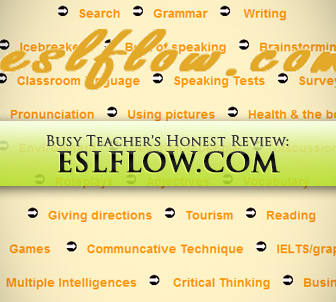Listen Up: Using Online Resources to Amplify Listening Skills


In his own words, here is why Randall created this site. "Basically, I wanted to create something on the Web that would help enhance language learning beyond the static page (i.e., just the printed word) and would focus on listening skills----a relatively underdeveloped area on the Internet at that time. My EFL students were constantly asking me for ways on improving their listening skills outside of the classroom, and it dawned on me that online materials for autonomous learners would be real boon to students worldwide. I want to point out that the main objective of the site isn't to test students listening skills; rather, by doing the variety of pre-listening, listening, and post-listening activities, students can discover ways to learn how to develop their communication skills. Listening and speaking skills must be developed together, and working together with other students in groups and discussing the content of the listening activities help learners improve their overall communication skills by focusing on specific tasks."
There are endless listening activities on the site. They are organized according to difficulty "based on rate of speed, vocabulary, content, ambient noise, idiomatic expressions, and other factors". I know that I have often found it challenging to determine whether or not a particular listening is appropriate for my students, so I really appreciate that Randall has taken the legwork out of it on this site. Randall does acknowledge on the sight that determining difficulty levels is “not an exact science”, and I have to say that occasionally, I have disagreed with the designation of difficulty assigned to materials in the Cyber Listening Lab. Also, my students who are true beginners at the foundations level would find most of what’s available here a bit too challenging.
The listening activities on the site can be used by teachers in lessons or by students independently. Randall gives some great suggestions on how to best use the Cyber Listening Café. In fact, these strategies and this particular sequence of events is just good instruction in general. I recommend trying it with any listening, even one not from the site. Randall recommends that teachers incorporate listening activities into class following these steps: http://www.esl-lab.com/tips.htm
When visiting the site for the first time, users will find an extensive list of topics. Content is categorized in a few different ways; there are quizzes for academic purposes, general listening quizzes, twenty-minute, listening-based vocabulary lessons, tips for language learning and life in general, and long conversations. Much of what’s available is ready to use, but teachers can certainly use the resources as a starting point and develop their own lesson structure. Listening are divided into Easy, Medium, Difficult, and Very Difficult to help instructors choose appropriate content. Here is a sample of the grammar quizzes available for various proficiency levels.
Randall has a section on the website called “Teacher Features”. He invites ESL and EFL teachers familiar with his site to write reviews of their experiences. He makes the request for reviews here and says: "Over the years, many teachers have come up with great ideas on how they have use one or more of my sites in their language classrooms, and I think that other students and teachers would greatly benefit from your ideas. Now, I would like to write a short article about you (and even one of your classes) and add it to this section of my site."

This is an awesome website for teachers to direct students to, either as part of a course or for supplemental practice materials. Teachers can train students to use the site, getting them started, and from there, students can spend endless hours listening to materials that they personally enjoy. There is such a wide range of topics on the site, that it would be impossible for someone not to find something of interest to them. Some other goodies for students include the self-study guide, the clear division of language functions within listening materials and activities, and a plan for students to reach their goals and track progress.
There is such a personal feel to the site, and Randall’s reputation is a hands-on one. While I’ve never personally written him with questions or suggestions, I get the sense that I certainly could, and that I’d get a warm response. This is all speculation of course, but there is something familiar and homey about the site that both instructors and students enjoy. Randall’s Cyber Listening Lab provides a pleasant user experience, for certain.

Randall’s ESL Cyber Listening Lab is I intended to be used for oral skills classes, and even more specifically, for listening development. Randall has created other sites, but this one has a limited scope. As someone who values integrated skills, I would prefer a more well-rounded set of resources that are pre-prepared. That said, I’ve been able to work lots of Randall’s listening activities into integrated lessons myself with great success.
The site can be somewhat overwhelming visually and in terms of navigation. Because this is Randall’s personal projects, understandably, he relies on advertising content to fund its maintenance. This can be overlooked, but the site definitely doesn’t have a polished, smooth feel to it like some others do.
There is so much here for teachers who are working with students on listening, speaking, pronunciation, or vocabulary, and new teachers especially, should be sure to explore all that’s available.
This is a guest review by an independent author. This review reflects the opinions of the author and not necessarily those of BusyTeacher.org as a publication.


